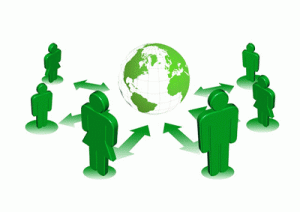 We are living in times testing the powers of old and introducing new, better, greater powers. Or are we? In their article ‘Understanding “New Power”’, Jeremy Heimans and Henry Timms make it clear that there really are new power models emerging or being created just now, but the old powers also keep their positions zealously and are not ready to let go and be forgotten. In this post, we will try to summarize the key aspects of new and old power and compare them, basing our observations on the findings of Heimans and Timms.
We are living in times testing the powers of old and introducing new, better, greater powers. Or are we? In their article ‘Understanding “New Power”’, Jeremy Heimans and Henry Timms make it clear that there really are new power models emerging or being created just now, but the old powers also keep their positions zealously and are not ready to let go and be forgotten. In this post, we will try to summarize the key aspects of new and old power and compare them, basing our observations on the findings of Heimans and Timms.
The Power Models
As you know, the world is divided and different powers control different parts of it. These powers can be categorized, somewhat conditionally, as ‘New Powers’ and ‘Old Powers’. According to Heimans and Timms, “Old power works like a currency. It is held by few. Once gained, it is jealously guarded, and the powerful have a substantial store of it to spend. It is closed, inaccessible, and leader-driven. It downloads, and it captures.”
Having this in mind, it is no surprise that old power does not require much participation from the people it controls. If we can represent the different ways of participation as a ladder, the first step of which is consuming and the last one – co-owning (c. more below), old power would rarely allow people go beyond consumption, as it is what it needs and wants from them – nothing more. New power, however, goes all the way to the top and here are the steps available:
- Consuming – this is the first step for both powers and the last step for old power.
- Sharing – The existence of new power models depends on sharing. That is why social media platforms (Facebook, YouTube, Tumblr etc.) have so many triggers always prompting you to share content with your friends.
- Shaping – when you share content, you modify in a certain way – you add a comment from you, sometimes you touch or retouch certain parts of the content.
- Funding – One does not have to use the services provided by old power institutions nowadays with platforms such as Kiva, Kickstarter or JustGiving. Instead of using checks and bank transfers, one can use PayPal or SagePay.
- Producing – Everyone can now be a creator. If you have a talent and passion for something, you can express yourself with the help of technology. Sing and show the world through YouTube, create and sell on Etsy, paint and post on deviantART, write and self-publish yourself on Amazon…
- Co-ownership – The examples given in the article are Linux and Wikipedia – two major platforms owned by large foundations, but constantly updated, upgraded and improve by the community. Anyone can participate– it is free, fast and easy and the result of “the passions and energies of many”. Another such example is the open-source smartphone OS Android.
In tomorrow’s post we will take a look at power values.

 Posted on 3,Dec |
Posted on 3,Dec |
 Posted by Anne
Posted by Anne 




There are no comments yet